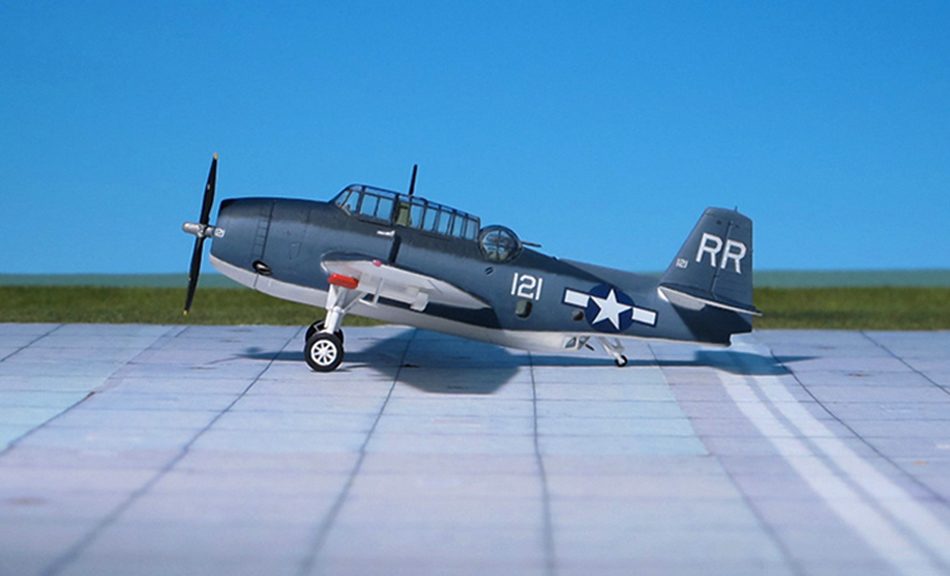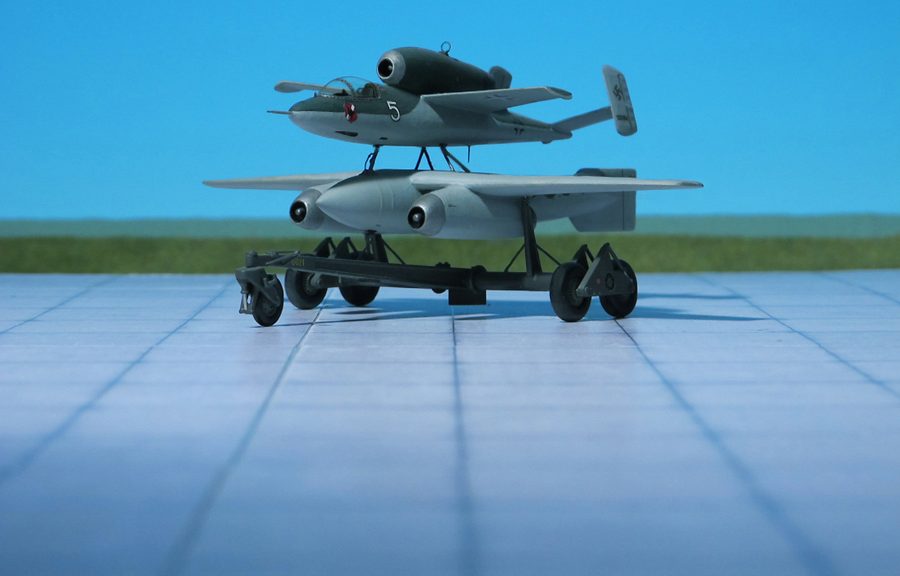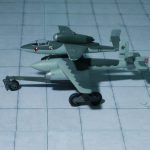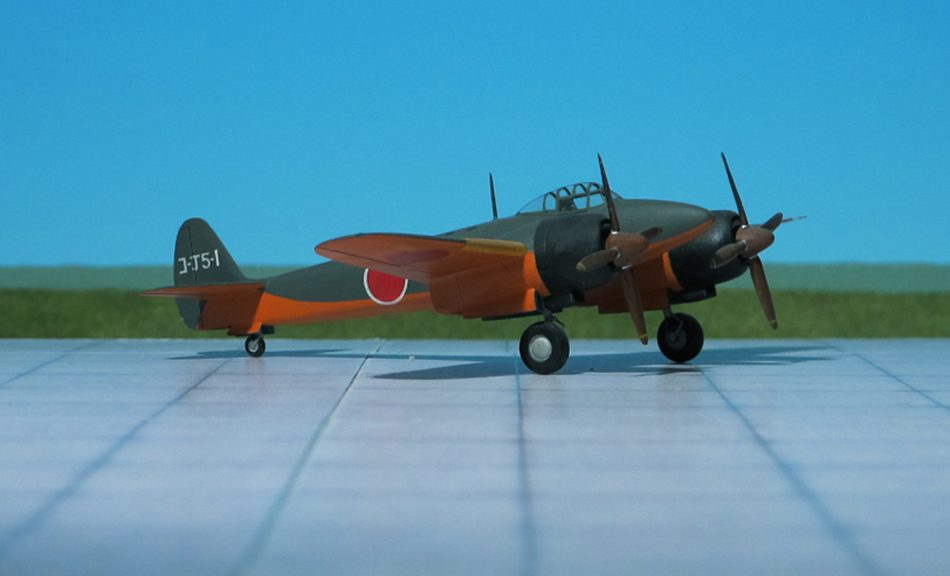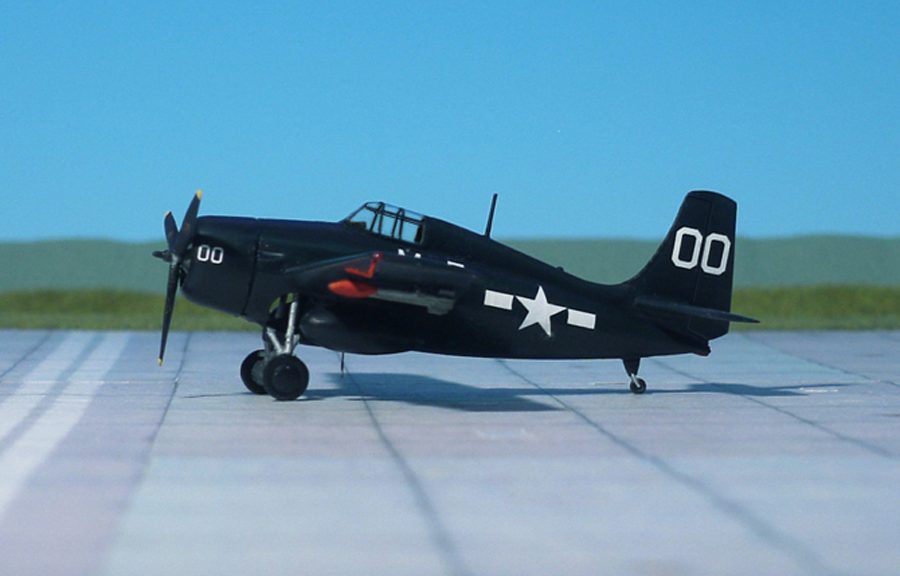TYPE: Carrier-borne torpedo bomber
ACCOMMODATION: Crew of three
POWER PLANT: One Wright R-2600-8 radial engine, rated at 1,700 hp
PERFORMANCE: 275 mph at 12,000 ft
COMMENT: Grumman TBF “Avenger” in mid-1942 Grumman’s first torpedo bomber was the heaviest single-engine aircraft of World War II, and only the USAAF’s Republic P-47 “Thunderbolt” came close to equaling it in maximum loaded weight among all single-engine fighters, being only some 181 kg lighter than the TBF, by the end of World War II. To ease carrier storage concerns, simultaneously with the Grumman F4F-4 “Wildcat” carrier-borne fighter, Grumman designed the “Avenger” to also use the new “Sto-Wing” patented compound angle wing-folding mechanism, intended to maximize storage space on an aircraft carrier; in addition to the “Wildcat” and “Avenger”, the “Wildcat’s” replacement, the Grumman F6F “Hellcat” also employed this mechanism as well. There were three crew members: pilot, turret gunner and radioman/bombardier/ventral gunner. One .30 caliber machine gun was mounted in the nose, a .50 caliber (12.7 mm) gun was mounted right next to the turret gunner’s head in a rear-facing electrically powered turret, and a single .30 caliber hand-fired machine gun mounted ventrally (under the tail), which was used to defend against enemy fighters attacking from below and to the rear. This gun was fired by the radioman/bombardier while standing up and bending over in the belly of the tail section, though he usually sat on a folding bench facing forward to operate the radio and to sight in bombing runs. The TBF-1C model dispensed with the nose-mounted gun for one .50 caliber gun in each wing per pilots’ requests for better forward firepower and increased strafing ability. There was only one set of controls on the aircraft, and no access to the pilot’s position from the rest of the aircraft. The radio equipment was massive, especially by today’s standards, and filled the length of the well-framed “greenhouse” canopy to the rear of the pilot. The “Avenger” had a large bomb bay, allowing for one Bliss-Leavitt “Mark 13” torpedo, a single 907 kg bomb, or up to four 227 kg bombs. The aircraft had overall ruggedness and stability, and pilots say it flew like a truck, for better or worse. With its good radio facilities, docile handling, and long range, the Grumman Avenger also made an ideal command aircraft for Commanders Air Group (CAGs). With a 30,000 ft ceiling and a fully loaded range of 1,610 km, it was better than any previous American torpedo bomber, and better than its Japanese counterpart, the obsolete Nakajima B5N “Kate”. Later “Avenger” models carried radar equipment for the ASW and AEW roles. Escort carriers sailors referred to the TBF as the “turkey” because of its size and maneuverability in comparison to the F4F “Wildcat” fighters in CVE air groups.
A total of 2,290 Grumman TBF “Avengers” have been produced until early 1944 when the production switched over to General Motors Company to produce 4,664 additional TBM “Avengers” (Ref.: 24).
